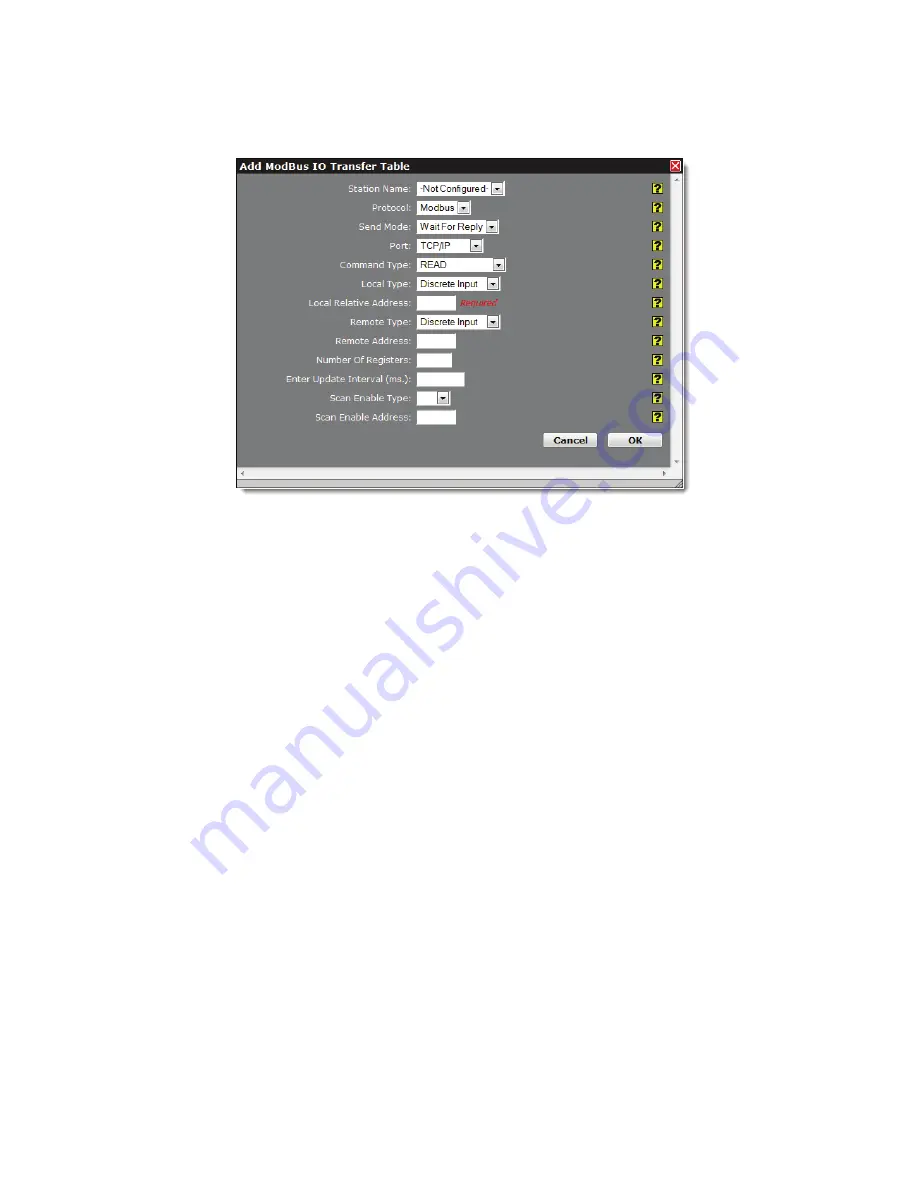
RAM-6021 Wired Router
85
Automation Tab
•
Click
on
the
Add
button
to
configure
the
I/O
Transfer
for
the
remote
station
and
the
following
pop
‐
up
window
will
appear:
Station
Name:
Name
of
the
remote
station
for
this
I/O
transfer.
This
option
lists
the
name
of
all
the
remote
stations
that
you
have
already
defined
and
configured
in
remote
station
table
entry.
Select
the
remote
station
name
that
you
want
for
this
I/O
transfer.
Protocol:
Modbus
is
currently
the
only
supported
protocol
used
for
I/O
transfers.
Send
Mode:
Mode
used
to
send
an
I/O
transfer.
Wait
for
Reply:
The
MODBUS
master
must
wait
for
an
I/O
request
that
it
has
sent
to
complete
before
sending
another
request
to
the
remote
station.
Rapid
Fire:
The
MODBUS
master
may
send
many
I/O
requests
to
a
remote
station
before
waiting
for
responses
from
the
remote
station.
Valid
Values:
Wait
for
Reply
or
Rapid
Fire
Port:
The
port
that
the
I/O
request
is
being
sent
across.
The
supported
ports
are
UDP/IP
,
TCP/IP
and
RS
‐
232
.
If
UDP/IP
or
TCP/IP
port
is
used,
the
remote
station
selected
for
this
I/O
transfer
should
have
its
IP
address
defined.
Command
Type:
The
commands
used
for
I/O
transfers
are:
READ:
Used
for
reading
MODBUS
registers
from
the
remote
station.
WRITE:
Write
MODBUS
output
registers
to
the
remote
stations.
WRITE_SINGLE:
Write
a
single
MODBUS
discrete
or
analog
output
register
to
the
remote
station.
Note:
Only
an
option
when
writing
a
singe
discrete
output
or
single
analog
output.
Local
Type:
I/O
type
on
the
local
station.
See
Table2
‐
I/O
Types
and
Limits
.
Local
Relative
Address
(Required):
First
adress
of
the
local
I/O
used
for
the
I/O
transfer.
Valid
values
are
0
through
number
of
registers
configured
for
specified
I/O
type.
Remote
Type:
I/O
type
on
the
remote
station.
See
Table
2,
3,
4,
5
‐
I/O
Types
and
Limits
.
Remote
Address:
First
register
address
for
the
remote
I/O
used
for
the
I/O
transfer.
Valid
values
are
1
‐
65536.






























